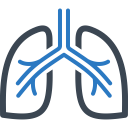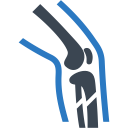Disclaimer
These Antimicrobial Guidelines have been developed by Alder Hey NHS Foundation Trust for use internally at Alder Hey NHS Foundation Trust with patients where antimicrobial treatment is being considered.
The guidelines are provided for use by appropriately qualified professionals and the making of any decision regarding the suitability of appropriate health care support and, of a particular treatment or therapy for a patient, is the responsibility
of and subject to the user’s professional judgement. Whilst every reasonable care has been taken to ensure the accuracy and suitability of the tool for antimicrobial prescribing, neither the author nor the publisher can accept any responsibility
for any action taken, or not taken, on the basis of this information.
Use of the Alder Hey Antimicrobial Guidelines is not a substitute for the exercise of appropriate professional skill and judgement.
Alder Hey NHS Foundation Trust shall not be liable to any person for any loss or damage which may arise from the use of the Alder Hey Antimicrobial Guidelines or any amended version of the Guidelines whether authorised or not.
Nothing in the above disclaimer shall restrict or exclude liability for death or personal injury caused by the negligence of Alder Hey NHS Foundation Trust.
Limitations
The Alder Hey Antimicrobial Guidelines are up to date as at June 2021. The Guidelines may become out of date over time, requiring modification or replacement as new data and protocols are published. Healthcare professionals have the responsibility
to be fully aware of current best practice and to use good clinical judgement in using the tool with individual patients.
Copyright
The Antimicrobial Guidelines are © 2023 Alder Hey NHS Foundation Trust. All Rights Reserved. Not to be amended, circulated or reproduced in whole or in part or in any form without the permission of the copyright holder.
Other than for internal use and distribution the Alder Hey Antimicrobial Guidelines may not be circulated or reproduced in whole or in part without the prior written permission of Alder Hey NHS Foundation Trust.
Terms of use
The Alder Hey NHS Foundation Trust materials may be used only under the terms set out in this document. Any unauthorised copying or reproduction or use of the Alder Hey Antimicrobial Guidelines materials may give rise to a claim for damages.
Use of the Alder Hey Antimicrobial Guidelines materials is subject to the laws of England.
IF YOU DO NOT AGREE TO THE ABOVE YOU ARE NOT AUTHORISED TO USE THIS TOOL AND MUST DELETE ALL COPIES OF THE SOFTWARE APPLICATION.

 Start Smart : Then Focus
Start Smart : Then Focus Cardiovascular
Cardiovascular CNS
CNS Dental and maxillofacial
Dental and maxillofacial ENT
ENT Gastro-intestinal
Gastro-intestinal Respiratory
Respiratory Sepsis
Sepsis Bone and Joint
Bone and Joint Urinary tract
Urinary tract Dosing
Dosing